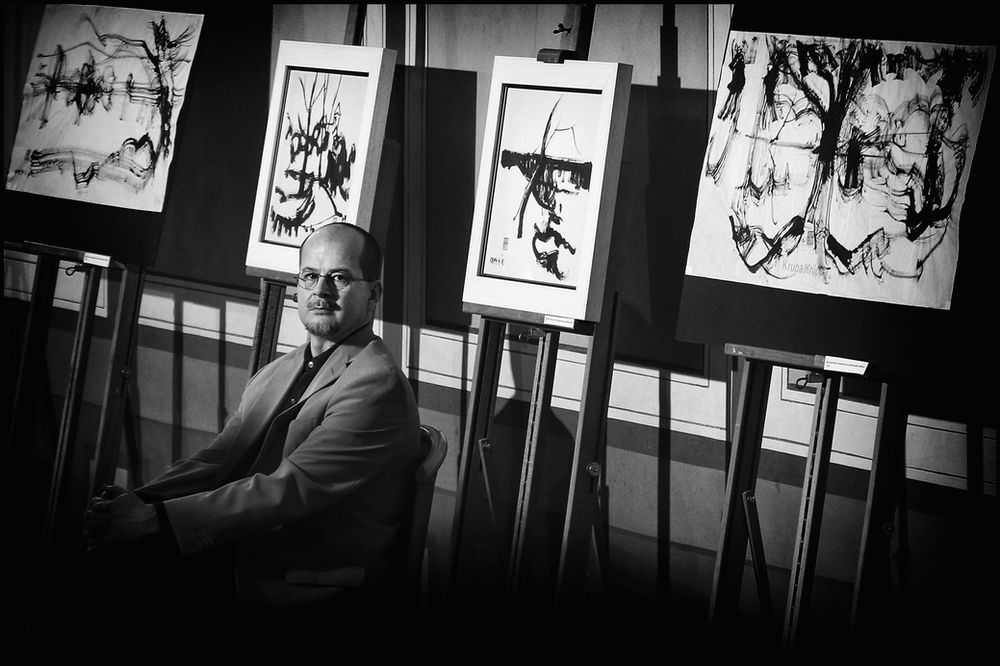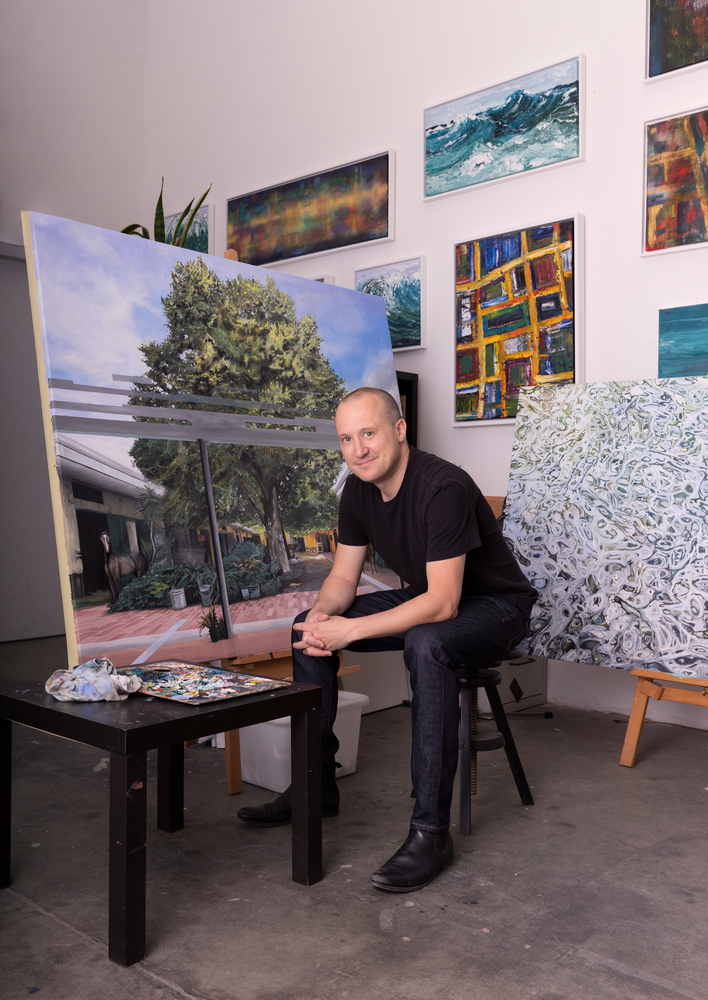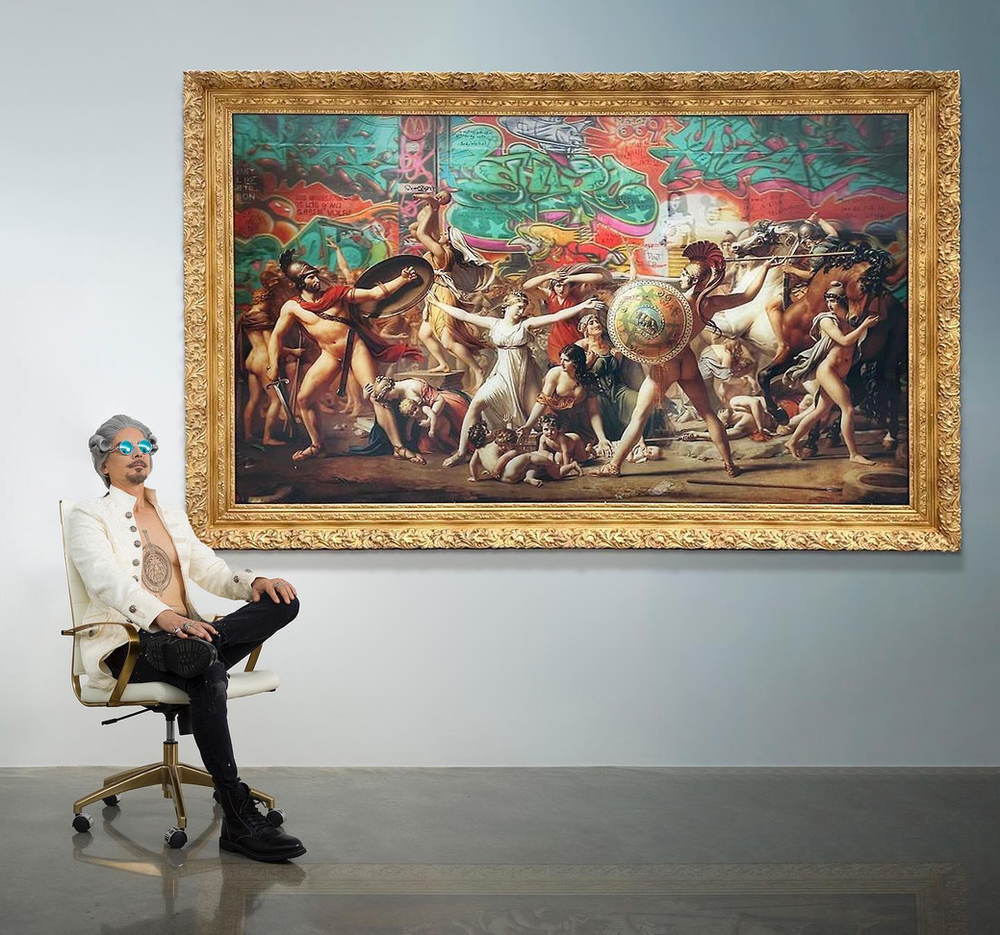Krupa’s first public academic prowess reached an outstanding peak in the year 1995 when he successfully completed his MFA studies at the Academy of Fine Arts, which was previously known as Kraljevsko zemaljsko više obrazovalište za umjetnost i umjetni obrt (est. 1907, in English: the Royal College for Arts and Crafts, at the University of Zagreb). This esteemed institution has a long-standing reputation for excellence. This achievement is a testament to at that time young Krupa’s dedication and hard work in the field of fine arts.
The motivation to pursue the field of art and ultimately become an artist
His grandfather, Alfred Krupa, a renowned Polish academic painter, provided him with a simple yet enriching upbringing. This upbringing, centered around art, shaped his life in more ways than one. He is celebrated for his contributions to the Croatian anti-fascist movement and post-war Yugoslav art. Additionally, he is credited with inventing the first modern suitcase with wheels, a remarkable feat.
While growing up, he found solace in painting, which became a constant source of inspiration and joy. Although he briefly considered directing films as a teenager, he soon realized that painting was his true calling.
As a child of the 70s and 80s, he experienced many cultural events and innovations. Despite potential prejudices, Yugoslavia had a progressive and enlightened urban class that encouraged artistic expression free from religious-nationalist restrictions. These experiences have had a profound and lasting impact on him, and he remains deeply grateful for his upbringing.
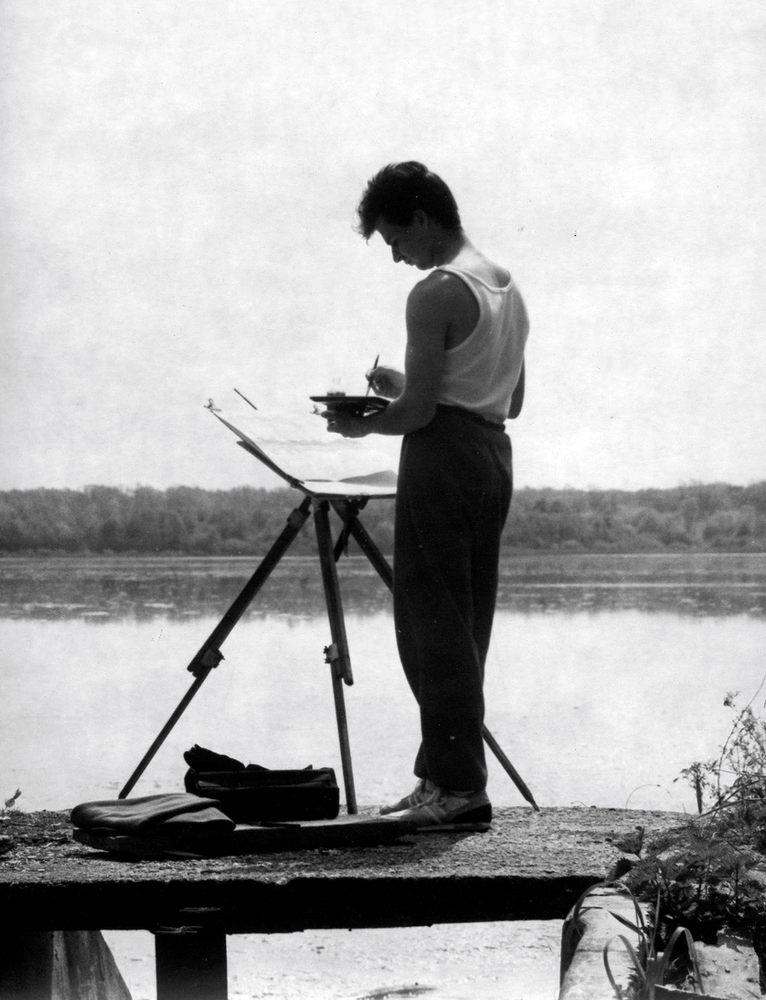
His artistic background, the techniques, and the subjects he has experimented with so far.
In 1989, Krupa experienced the loss of his grandfather, who had been his first teacher and a significant source of personal knowledge and insight. Two years later, Alfred embarked on his academic journey by enrolling at the Academy of Fine Arts at the University of Zagreb. As a student of the classical academy, he acquired a wealth of concrete knowledge, mastering a diverse range of techniques spanning from academicism to high modernity. Alfred explored classical and contemporary motifs, both free and structured, and ventured into both standard and innovative approaches.
Let us cite the words of author and journalist Juliana Arles. (YV Art Spot, Poland):
‘From early childhood, Alfred was taught to love the fine arts. The creative abilities of the young artist were encouraged and developed in every possible way in the family. Especially from his outstanding grandfather, who, in turn, had the opportunity to learn from the legendary Jozef Mehoffer, one of the greatest figures in the Young Poland movement, who brought modernism to Polish culture. During the difficult period of the Homeland War in Croatia (1991-1995), young Krupa turned to the culture of the Far East. His many years of knowledge of various philosophical movements, as well as the experience of spiritual practices, is displayed in his New Ink Art Manifesto 1996. At that time, the artist deeply rethought the oriental approach to modern ink painting and shared the results of his theoretical analysis in articles, notes, and books. In his art, Alfred Krupa masterfully and succinctly combines the minimalism of the East, with the sensual expression characteristic of a Western artist. His work erases conventional boundaries and expands and enriches the viewer’s perception. At the same time, the art of Alfred Krupa betrays the artist’s very personal, subjective experiences. So, studying the works of Alfred Freddy Krupa, the viewer can not only enjoy the visual aesthetics of plastic lines and the harmony of composition but also try to comprehend the deep experience of the creative soul.’
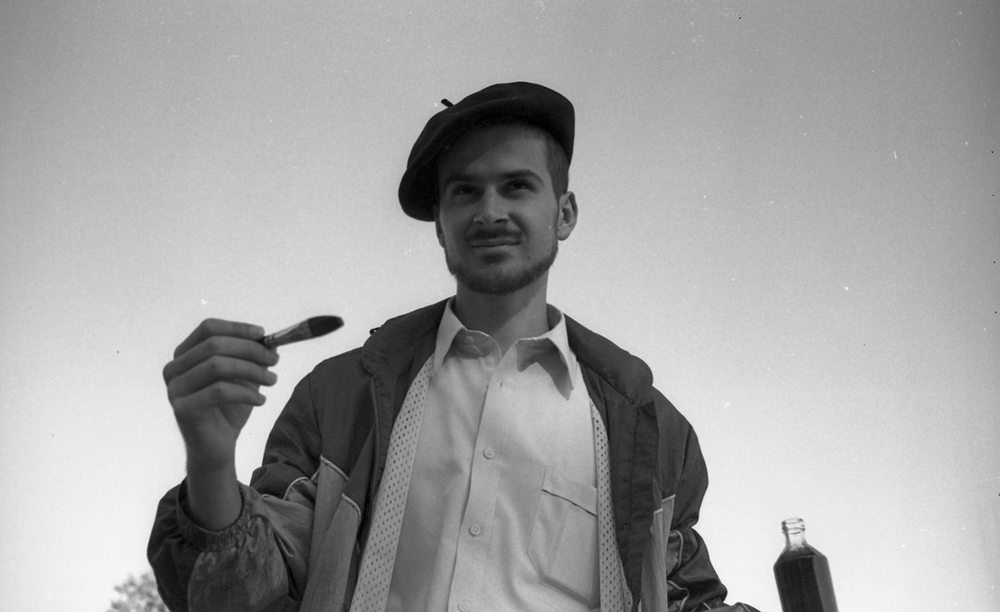
His unique identity as an artist
We will again use the words and excerpts from the review published in 2022 (Jeffrey Grunthaner (a curator and the Berlin editor of Noah Becker’s WhiteHot Magazine of Contemporary Art, New York):
‘The relatively diminutive scale of the art world in Krupa’s native Croatia has only compounded the High Modernist tendency that runs throughout his work. Unlike most artists working Krupa can make a genuine claim to being avant-garde—if only because the sulfurous vapors of war, and existential sufferings following a corrupt and disrespectful post-war establishment, seem to emanate from his handling of ink, making it less an artistic medium and more like an advanced technology documenting the nervous tremors that attend our awareness of inner and outer conflicts.’
Also, the editorial of the US art portal District Artisan wrote:
‘Provoked by life’s circumstances, this artist overcame family plight, political hardship, and the pain associated with the human struggle to become a pioneering figure in the Modern Ink Movement. His family lineage and contributions to the visual arts, like his own, were the result of the human will’s power to persevere. His perseverance to overcome and defeat the failures and obstacles presented by social injustices allowed him to convert pain into prolific works of art.’
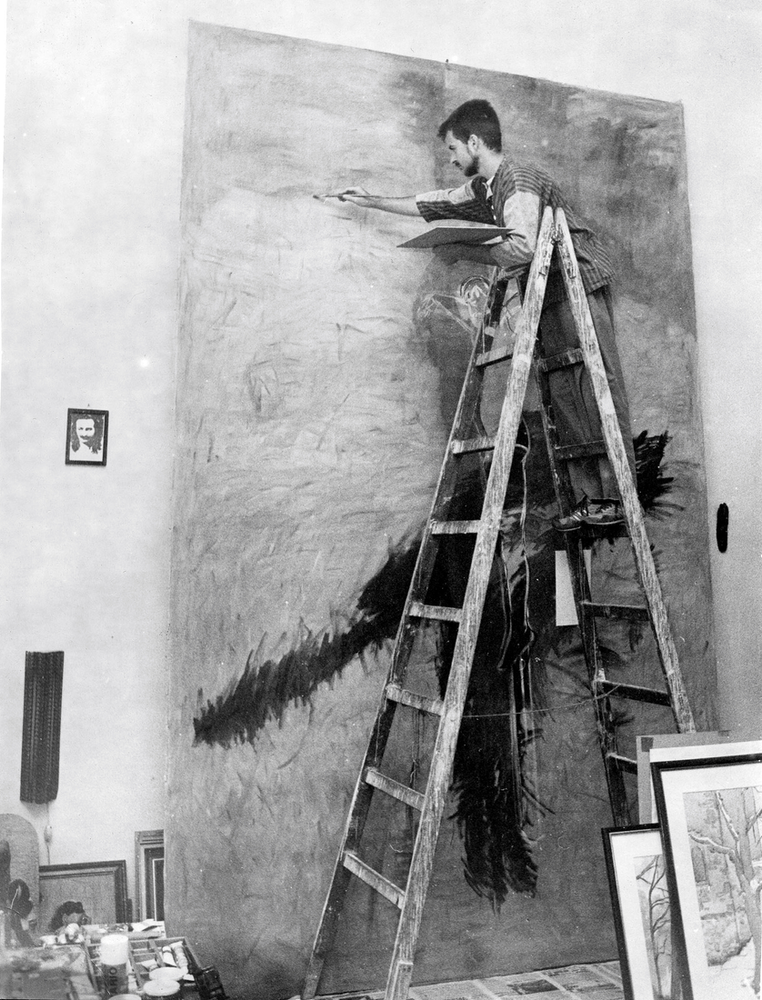
Krupa’s inspiration.
Drawing from a wealth of both real and imagined life experiences, he finds endless inspiration in the natural world that surrounds him. In a 2019 interview at the Van Gogh Museum in Amsterdam, celebrated pop and contemporary artist David Hockney spoke eloquently about the importance of landscape art, highlighting the power of nature to ignite creativity and joy.
He aims to evoke specific emotions in viewers through his art.
He is a bold and intuitive artist who values the raw essence of his creations above all else. While he may not always plan ahead, he dedicates ample time to the internal preparation necessary to ignite his passion for art. His approach is characterized by a fearless and spontaneous attitude, often resulting in a process that he himself can hardly recall. He frequently revisits familiar themes and motifs, each time approaching them from a unique perspective or mood. His ultimate goal is to convey his innermost emotions and ideas through his work, without relying on cheap tricks or gimmicks. His visual art is an expressionistic reflection of his processed impressions of life. To him, art is not just a craft or creative outlet, but a deeply personal interpretation and reflection on the world. He never creates art for the sake of superficial decoration or fleeting pleasure.
At one point, he delved into the idea that his spontaneous approach to drawing lines is actually governed by the same principles of multidimensionality as existence, even connecting it to the concept of string theory. This is a fascinating topic that falls within the realm of his work in art theory.

Alfred’s manners and techniques of creating art
He finds solace in being alone with his thoughts whether he’s out in nature or crafting imaginative pieces in his workspace. He believes that true artistry requires one’s full concentration and emotional investment, therefore he abstains from listening to music to maintain his focus. While he recognizes the value of relaxation, he takes his artistic endeavors seriously. He has already answered any outstanding inquiries in his previous response. However, when given explicit directives, he assumes the role of a commissioned artisan and carries out the client’s wishes accordingly, prioritizing their objectives over his own creative liberty.
It is expected that a college-educated artist possesses proficiency in various traditional drawing and painting techniques, and such is the case with him. He has a prolific body of work, with a particular focus on water techniques, especially various ink techniques, which resonate with his artistic vision.
Krupa’s innovation
This was his original plan and projection since the 1990s and he described it in his programmatic text New Ink Art Manifesto (1996). Art criticism and art historian has written a lot about it over the years including the authoritative The Allgemeines Kunstlerlexikon – World Biographical Dictionary of Artists, Berlin:
In his manifesto (New Ink Art Manifesto, 1996, publ. 2019) Krupa describes his ink painting as an interpretation of Western modern art with the means of East Asian ink technique, as a combination of contemporary painting and traditional Chinese-Japanese calligraphy. In this regard, he is considered the leading representative of Modern European ink painting.
This element of feeling for two different historical art traditions and my approach to innovation earned me (among other things) a prestigious scholarship from the Government of Japan in 1998.
Through all those years of work and research (searching for oneself and one’s artistic form), one willingly unsought but extremely important ‘side effect’ is the development and formation of an authentic painting and drawing handwriting.
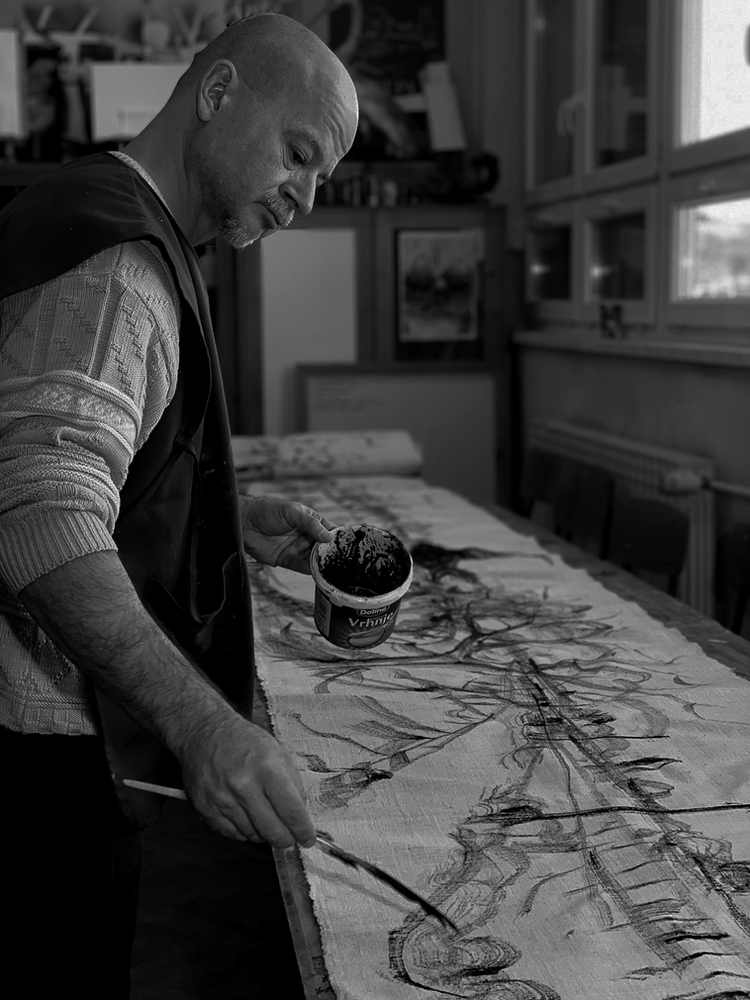
The Room
Prior to 2010, he resided in the palace of his birth, which was also the location where his grandfather created much of his art. This magnificent palace was constructed at the start of the 20th century by the industrialist Maxo Heinrich. The spacious apartment, measuring 162 square meters and boasting a 5-meter ceiling height, was both comfortable and functional for both living and working. The room was designed as a studio. However, these days he no longer has access to such a space. Instead, he works wherever he can find the time and solitude, whether that be inside his apartment, outdoors, or in other tranquil settings. Although he no longer has the freedom that comes with a dedicated studio, he has learned to adapt to his circumstances and make the most of every situation.
Kurpa’s vision for the progression of his work and the advancement of his artistic career in the future.
Krupa desires to increase the momentum of his artistic career through successful auction sales and participation in large biennial exhibitions. Additionally, he hopes to see an increase in the number of monographs dedicated to his paintings and an expansion of his presence in specialized encyclopedias and lexicons. There remains ample room for improvement in this regard, as the status of today’s most famous artists is a direct result of decades, if not centuries, of constant promotion through various channels.
Krupa acknowledges that the evolution of his art’s morphology is unpredictable and may even surprise him. Nevertheless, he remains committed to working diligently until the very end, as long as his abilities allow for it.
